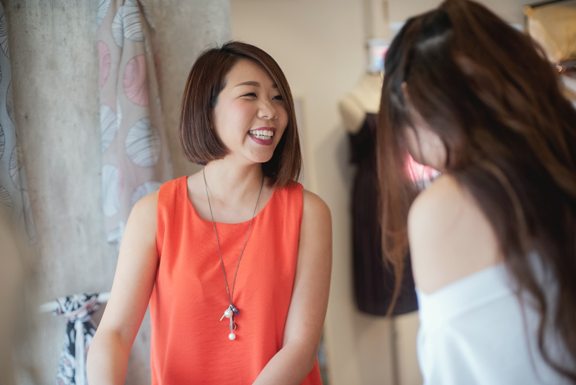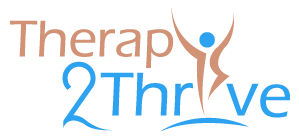Therapy2Thrive™
BLOG
925-998-3392
Hurdling the Barrier of Saving Face
When it comes to talking about mental health concerns, the Asian community faces many cultural barriers that prevent this open and much needed discussion. One strong cultural force is the idea of “saving face”. The term “face” is associated with honor, dignity and reputation in the eyes of others. Thus the term “saving face” essentially means to preserve the respect of others, or the community at large.
Asian culture is one rooted in the collective, or interdependence versus the more Western practice of independence. There is a great sense of pride in achievement for the family as a whole—when one person is doing well, it looks good for the whole family and vice versa.
“Saving face” is a deeply traditional concept that holds how one is viewed in very high esteem. Unfortunately, the value that this holds in the community mentality fuels many negative attitudes towards seeking and receiving “outside” help. A common solution for Asian families needing any kind of support is to seek help from within the family system. For example, Aunties or Uncles can often serve as sources of information so that families don’t need to seek help from outside sources. The trouble with this mentality is that it perpetuates the need for secrecy and builds a potent sense of shame when more acute help is needed. My own experience with facing mental illness within my own extended Asian family system has resulted in the loss of not being able to know about or build relationships with multiple members of my own family. Growing up, there was a strongly reinforced façade that recognition of mental illness was not able to penetrate.

In the larger community, mental health issues do not receive the same vigor of focus as do physical ailments. If I had a broken bone, there would be clear evidence that something is wrong and that medical attention can fix it. Mental health issues lie in the gray area. Expression of moods or psychological states isn’t as black and white as a broken bone and so it tends to be viewed more as a personal weakness impacting a sense of family weakness. Emotions are not openly discussed and often when they are talked about, it is with an air of negativity. “Why are you crying?”, “You’re too sensitive.” When saving face trumps the need for getting support then people create the narrative that their problems are too shameful to shed light on or talk about, and silent suffering ensues. Ongoing silence can reinforce a sense of isolation which can lead to higher risk of depression and/or thoughts of suicide.
The Substance Abuse and Mental Health Services Administration (SAMHSA) did a national survey on substance use and health and found that mental health issues are on the rise for Asian American and Pacific Islander (AAPI) young adults. According to their findings, depressive episodes increased from 10 percent to 13.6 percent in AAPI youth 12-17 years old between 2015 to 2018. Changes in the 10 years between 2008 and 2018 show that overall suicidal thoughts, plans, and attempts have increased in AAPI young adults ages 18-25. So what can we start to do to combat the long held stigma around mental health in the Asian community while also respecting the role that culture plays in one’s value system?
1. Share your story
Being open about your own experiences at the intersection of culture and mental health can help validate that others are not alone. Challenge the narrative that mental health is something to hide and instead share your story or be open to having honest conversations about mental health struggles. Normalize the idea that mental health is health. Honesty and communication are powerful weapons against shame and secrecy.
2. Be a safe person
By being an ally, you can create a more positive narrative around leaning on others. There are many warning signs that someone may be struggling. If you notice a friend withdrawing more from family/friends and other normal daily activities, or engaging more frequently in unhealthy coping behaviors (such as alcohol, drugs, or over/undereating) then checking in and offering a safe, non-judgmental space can help tremendously to feel less alone. Knowing that not wanting to be a “burden” on others is a big factor in holding back, being a person someone can reach out to is a safe way to normalize that needing support is not weakness.

3. Know the resources available
Being a support person to another is helpful and it is also important to know when to guide them in the direction of professional help. With the shame sentiment around outside help, many Asian American people find it more comforting to receive help from someone who comes from the same ethnic background or speaks the same languages. There are many avenues to finding professionals that fit this need.
Your primary care physician can provide appropriate referrals to mental health providers in the community. Once you receive contact information for mental health providers, asking questions around their experience working with culturally specific groups is an appropriate way to find the right fit for yourself. Remember, you can direct your own care.
NAMI (National Alliance on Mental Illness) is a great resource for support groups, blogs, advocacy, education on topics of Mental Health including culturally specific resources.
AMHC (Asian Mental Health Collective) is a resource that provides a directory of Asian, Pacific Islander, South Asian American providers nationwide.
The National Suicide Prevention Lifeline (1-800-273-8255) is a 24 hour, 7 days a week confidential resource for anyone to reach out to if feeling suicidal or emotionally distressed.
Therapy2Thrive™ brings Hope for Healing
Our counselors at Therapy2Thrive™ provide compassionate, practical, and evidenced based practices to assist you in the therapeutic process to meet your goals and find hope to heal the challenges you are facing.
Contact our family counselor in Pleasanton for private consultation.
